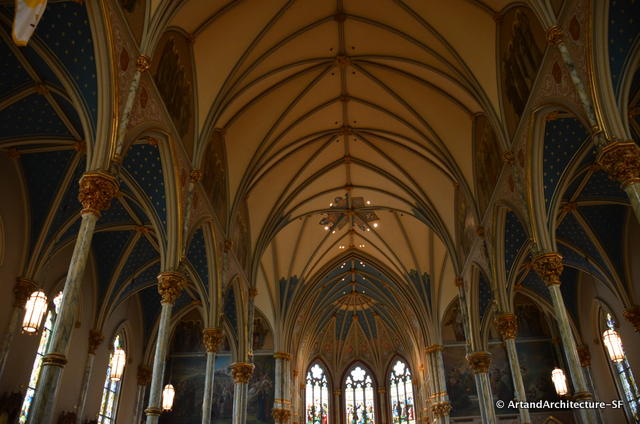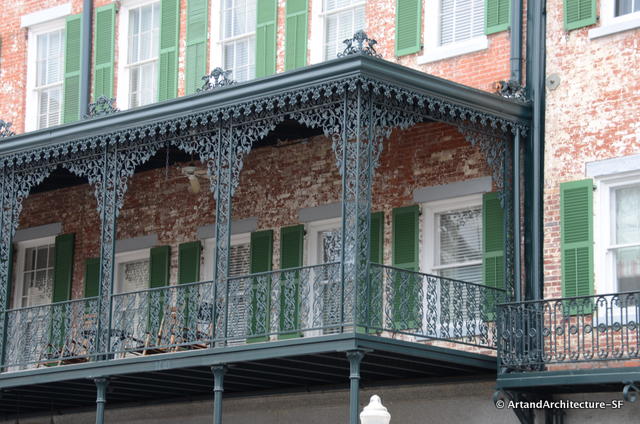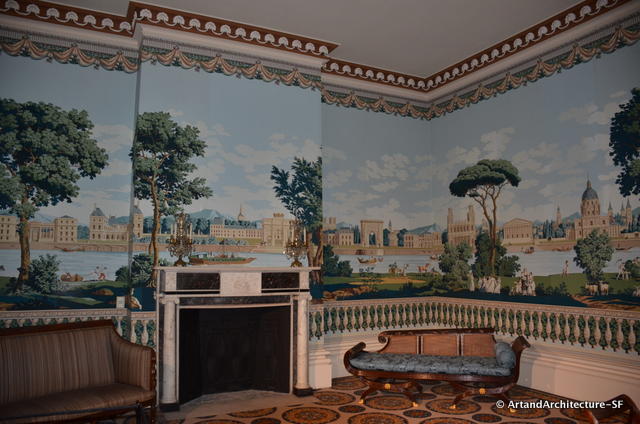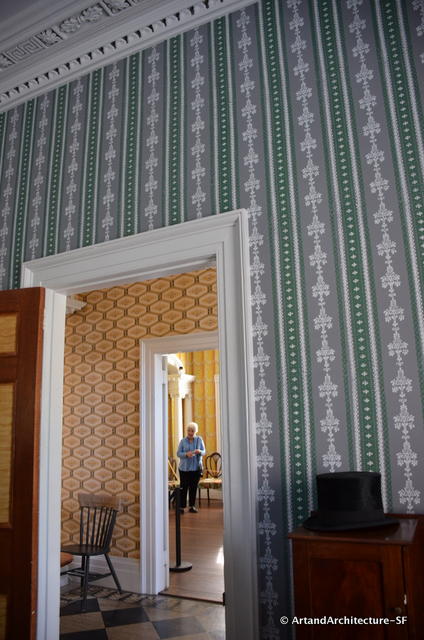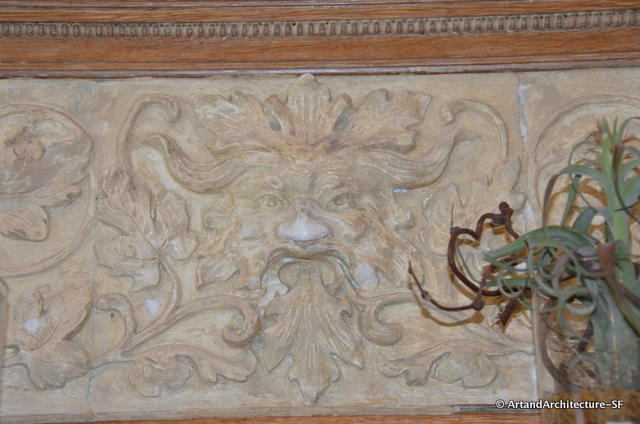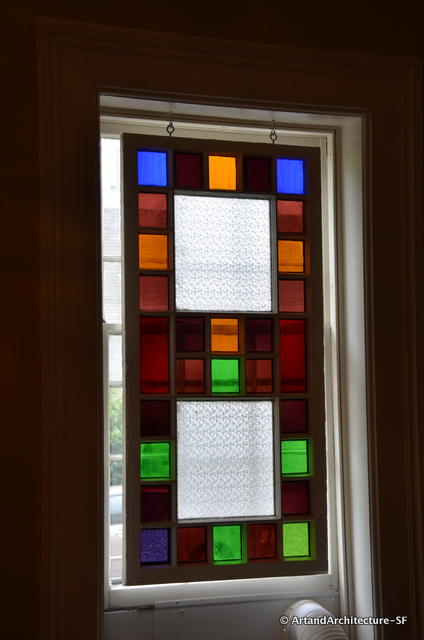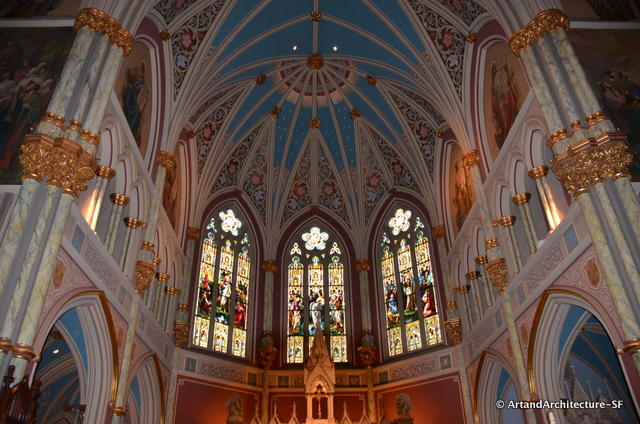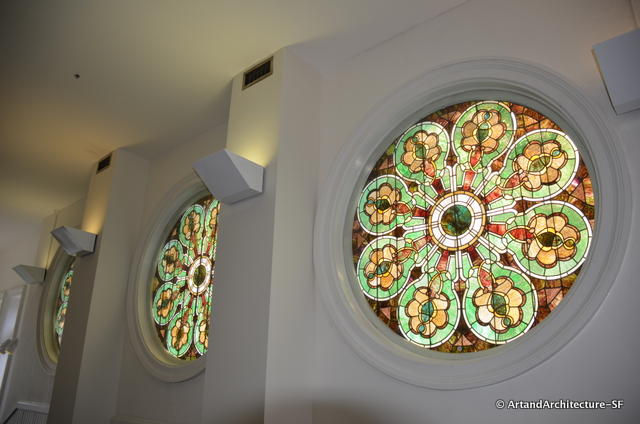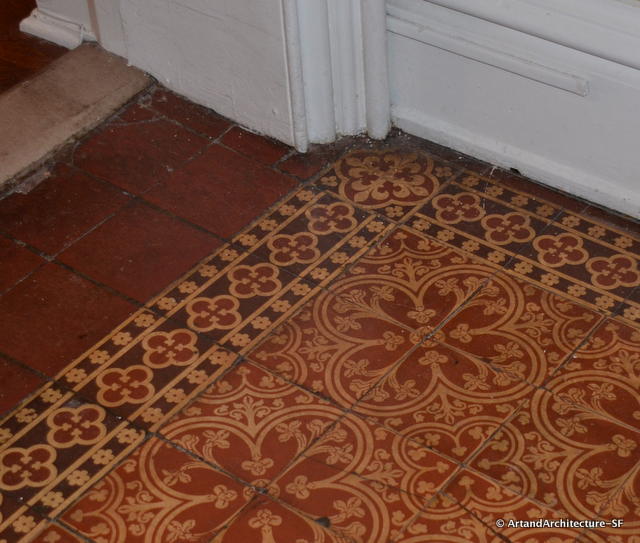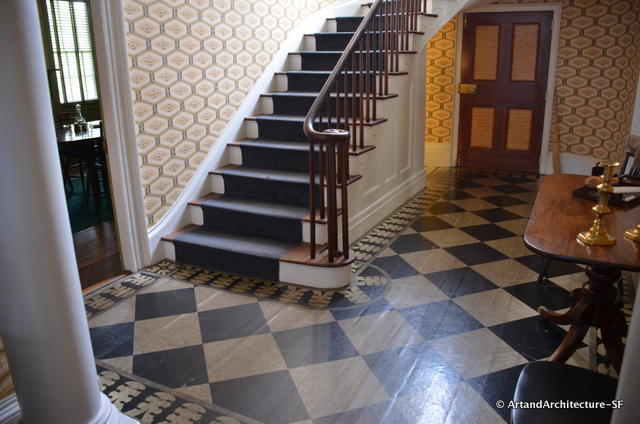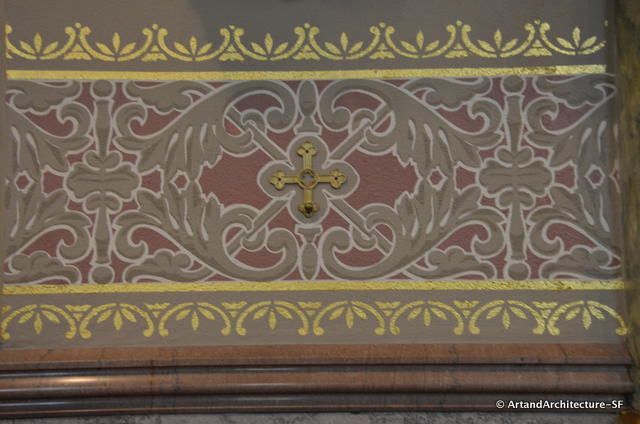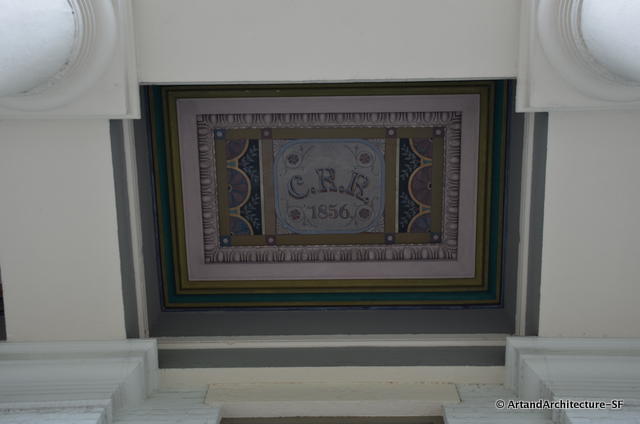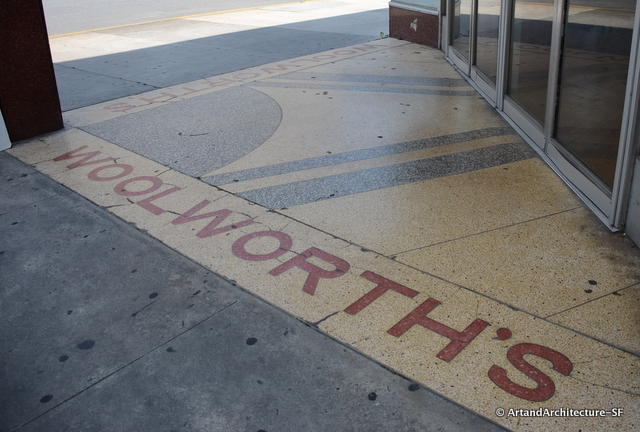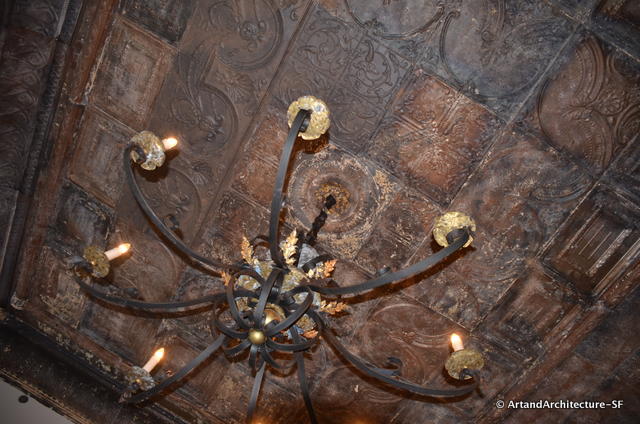There is so much cast iron in Savannah but one of the more impressive pieces is the fountain in Forsyth Park
The iconic fountain was selected out of a catalogue of ornamental ironwork by Janes, Beebe & Company of New York . Known simply as design Number Five, it was one of a handful of elaborate fountain designs featured in the catalogue and was said to have cost the city $3,000 to install. The No. 5. design is modeled after a fountain that was created by Michel Joseph Napoleon Lienard and cast by the J.P.V. Andre Iron Foundry in Paris.
Cast iron was used functionally, as in the Cathedral of St. John the Baptist, the columns there are structural and by using cast iron the church was able to utilize a smaller diameter column and increase interior space.
Cast iron was also used to show off one’s wealth. 
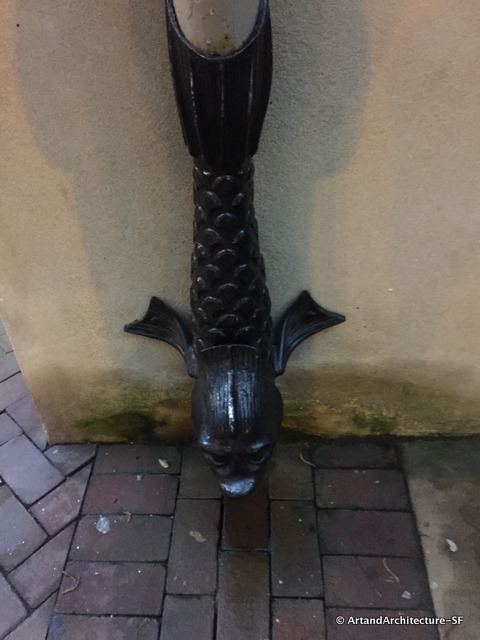
Cast Iron Downspout on a private home. This is a copy by Ivan Bailey, the originals no longer exist, but it is typical of the period, you will find these on the Oglethorpe Club as well.
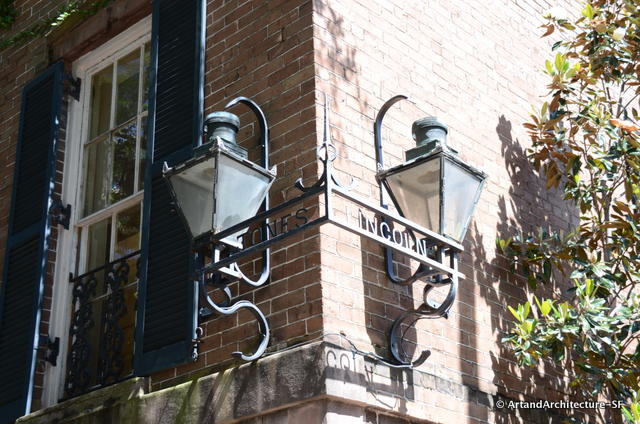 Wallpaper is the hallmark of many older homes, however, what is left is usually too damaged to keep, in the following cases, with the exception of the Telfair mansion (which is original) all the others are reproductions. This painstaking process requires experts that slowly tear back years of paint and covering wallpaper, then finding the original and having it reproduced.
Wallpaper is the hallmark of many older homes, however, what is left is usually too damaged to keep, in the following cases, with the exception of the Telfair mansion (which is original) all the others are reproductions. This painstaking process requires experts that slowly tear back years of paint and covering wallpaper, then finding the original and having it reproduced.
Cast plaster, being my career for 25 years always makes me look. In the case of the Green-Meldrim house, my mouth was agape. The pierced plaster work throughout, is not only stunning but very rare.
Of course stained glass is studied by anyone that is interested in any period of historic architecture, here is a little of what is in Savannah.
Flooring is also always of interest, tile, wood, and even floor cloths were common throughout Savannah.
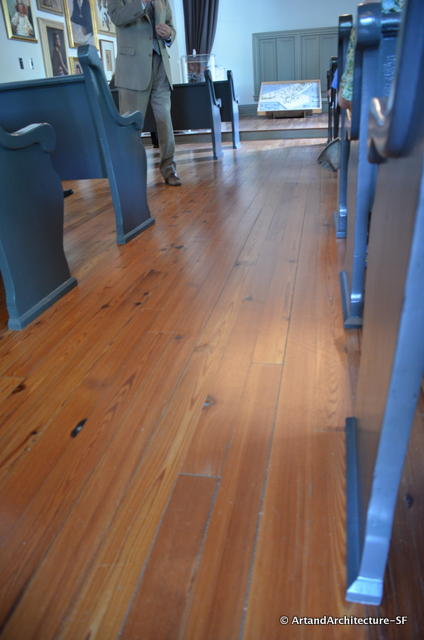
Center Pine Wood Floor in the Orphanage and Convent for the Missionary Sisters of the Franciscan Order
There are many other crafts involved, here are some examples that showed up a little less in Savannah.
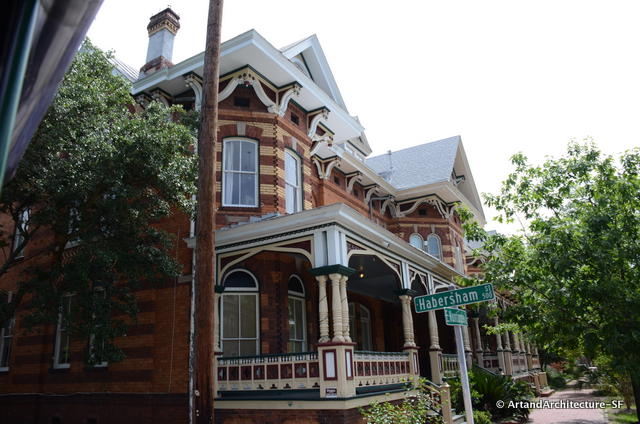
Polychrome Brickwork – A style of architectural brickwork which emerged in the 1860s and used bricks of different colors in patterned combination to highlight architectural features.

